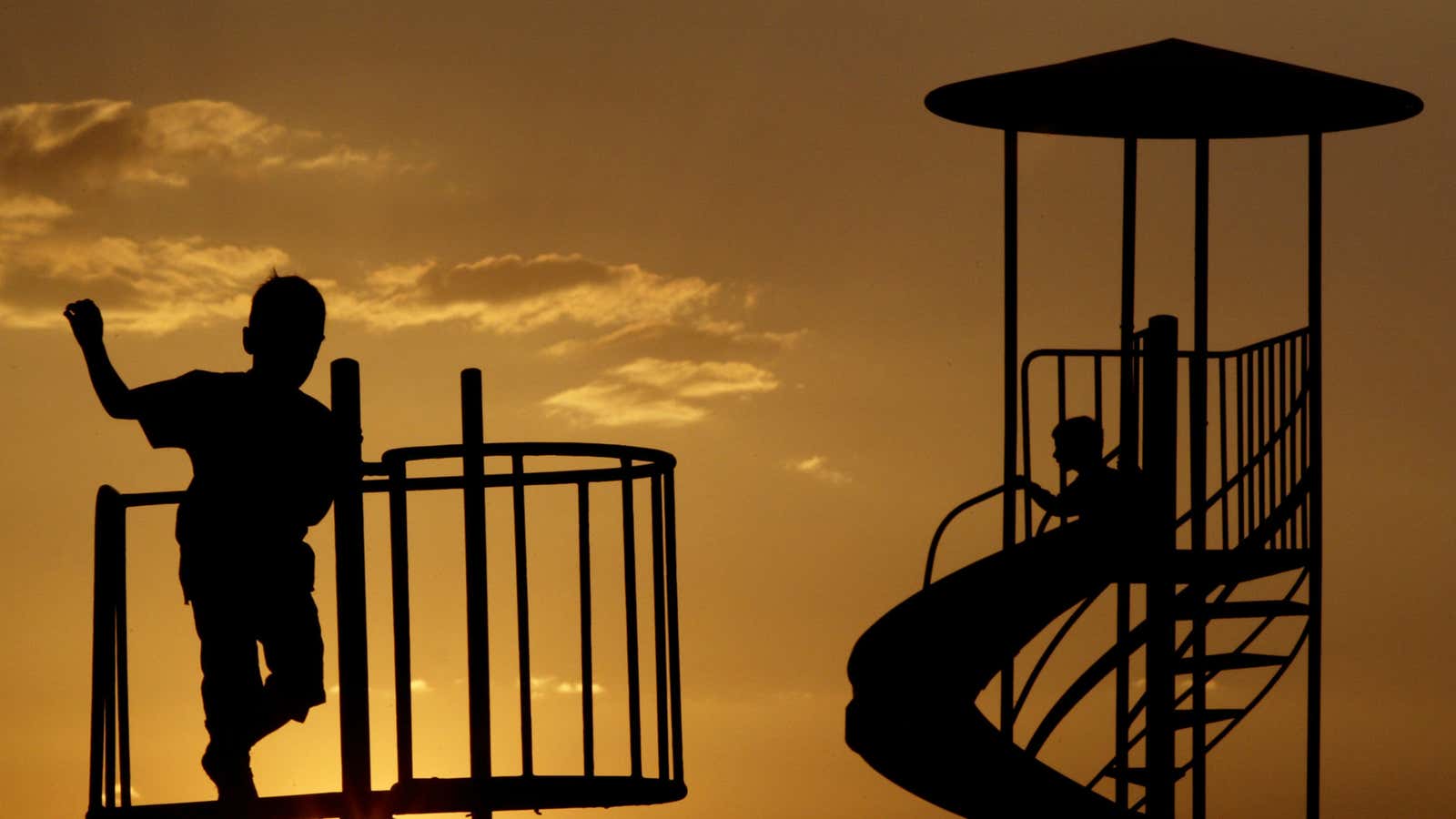Bullying is a big deal. According to the National Bullying Prevention Center, more than one out of every five American students reported being bullied in 2015. Research shows that bullies (pdf) are at a greater risk for academic problems, substance use, and violent behavior later in adolescence and adulthood. Those who are bullied are at greater risk of developing anxiety and depression.
There’s ample awareness of the issue these days—every single state in the US has adopted some form of anti-bullying legislation. And there’s evidence now that things are getting better. According to a new, 10-year study from Pediatrics, researchers examining 13 indicators of bullying and related behaviors from nearly a quarter of a million students in Maryland, grades four to 12, found that fewer kids are victims of all kinds of bullying, from being hit or pushed or shoved, to being cyber-bullied or the victim of rumors. Kids also report feeling safer, and more believe that adults are doing enough to keep them safe.
But there was a wrinkle in the good news: kids continue to feel that bullying is a problem. Just under half believed that in 2005; just over half believe that now.
If things are getting so much better, why aren’t kids feeling it?
The deepening awareness of the issue is one logical reason.
“While they are reducing the actual behavior, it’s hard to change perceptions,” said Catherine Bradshaw, an education professor and associate dean at the University of Virginia, and one of the authors of the study. “We have this assumption that things are worse,” but we have to look at the data, she said.
And the data, while suggesting big improvements in the trends, also show that the problem is hardly solved. According to the study, 13.4% to 28.8% of students reported that they experienced bullying in the past month (the large range is due to the ten-year time span), with about half saying they witnessed it. While kids reported feeling safer, they also were slightly less likely to report having a sense of belonging (79.1% in 2014 said they felt a sense of belonging, compared to 81.8% in 2004). And though high schools showed the most improvement across time, middle schools are where rates of bullying peak.
Still, parents and educators—and kids—shouldn’t dismiss the clear progress that’s been made.
“There is a lot of excitement here,” Bradshaw said. “But there is a lot of work to be done to make sure the improvements are sustained,” she said, noting the data stopped in 2014 and since the US presidential election there has been heightened concern—among LGBT or immigrant communities, for example—that these gains were slipping.
“We can’t take our foot off the gas here when we are working to create a safer and more supportive school environment,” Bradshaw said.
